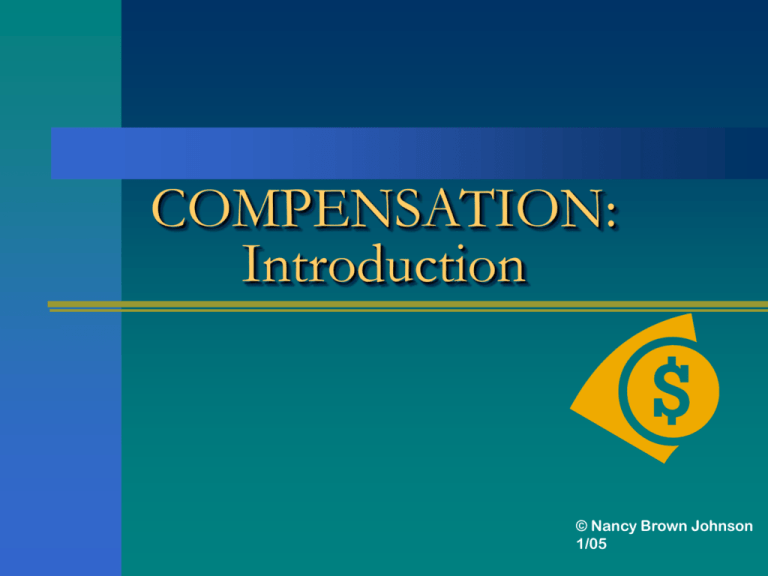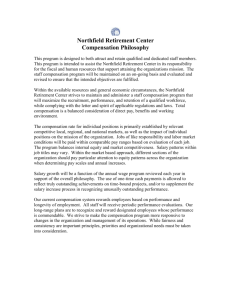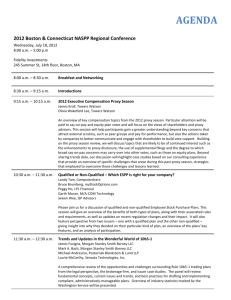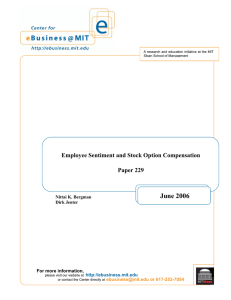COMPENSATION
advertisement

COMPENSATION: Introduction © Nancy Brown Johnson 1/05 Why is compensation important? Society Firm Individual What are the elements of compensation? Base pay Incentives Fringe benefits What are different forms of payment? Cash Benefits – Payment for time not worked – Non-pecuniary benefits (gym memberships, child care) Intrinsic Exchange Theory Pay is an exchange for efforts Implicit Social Contract – beliefs about mutual obligations Implicit Psychological Contract Temporal Quality – amount of time in job & career Equity Theory Pay, benefits, opportunities, etc. OUTCOME INPUTS the same more or less <=> ? OUTCOME INPUTS effort, ability, experience etc. A person evaluates fairness by comparing their ratio with others. IRWIN ©a Times Mirror Higher Education Group, Inc., company, 1997 Equity Theory Workers compare their compensation with others If unequal workers attempt to restore equity Workers Restore Equity by: Reducing input Attempting to get raise Quitting Psychological Adjustment Compensation Model Equity Individual (Pay for Perf.) Internal (Pay Structure) External (Pay Level) Procedural Justice (Pay Administration) Compensation Tool Seniority, Performance Job Evaluation Objective Market Surveys Attraction Communication, Appeals Organization Citizenship, Commitment Motivation Retention Internal Equity Comparison of Jobs Jobs worth to the Employer – Similarities and differences in work content – Relative contribution to organization objectives Accomplished through job evaluation External Equity Value of the job to the labor market Assessed through wage surveys Individual Equity Relative pay between individuals doing the same job Influences motivation Organizational Justice Perceived fairness of the pay system –Outcomes –Process Issues –Interactions Influences Commitment, Organization Citizenship Strategic Perspectives The strategy balances 4 types of equity Best Practice Contingency: – organizations will have pay systems that fit with their business strategy – organizations that have “fit” will outperform those without “fit” Strategic Decisions include: – pay level, pay structure, individual rewards, team rewards, pay administration Best Practice v. Strategy Debate Best practice - there are a set of compensation practices that are good for all firms. Strategy - the set of compensation practices that are good for firms will vary based upon the firm’s goals. Best Practice Examples* High wages Guarantee of Employment Security Use incentives; share gains Employee Ownership Participation & Empowerment Teams Smaller pay differences *Source: Pfeffer, Competitive Advantage Through People, 1994 Summary There are four key elements to equity The strategic contingency view is that some firms may weight those elements differently depending on firm objectives The best practice view is that there are good practices that all firms should engage in no matter what their strategy. Summary (continued) Equity forms the basis for compensation management Strategy guides the organization in the balancing of equity components The test is whether the compensation system reinforces sustained competitive advantage










